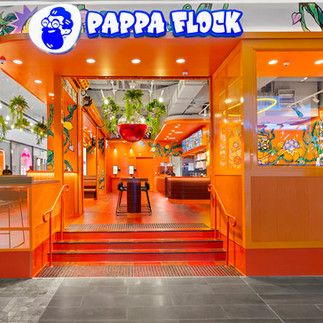Hospitality Design Trends 2025: From Casual Dining to Premium Venues
- GARY McCARTNEY
- Sep 22
- 3 min read
Updated: Sep 22
The hospitality industry is constantly evolving, and in 2025, restaurant and bar design in Australia is set to reach new heights. From casual dining spaces in Sydney to premium hospitality venues in Melbourne, business owners are looking for design strategies that balance functionality, atmosphere, and customer experience.
At McCartney Design, we see hospitality design not just as decoration but as a commercial driver - spaces that work for both guests and operators. Here are the top hospitality design trends shaping Australian venues in 2025.
Flexible and Multi-Use Spaces
Hospitality operators in 2025 are demanding more from their venues. With casual dining, premium restaurants, and bars needing to adapt to different times of day, flexible layouts are becoming essential.
Movable partitions, modular seating, and adaptable restaurant design allow a single venue to transform from a morning café space into a vibrant evening bar. This approach maximises revenue potential while keeping overheads under control.
If you’re wondering how to design a multi-use hospitality space, the answer lies in balancing functionality with atmosphere, ensuring each configuration still feels intentional and seamless for guests.
Sustainability and Responsible Material Choices
Sustainable hospitality design has shifted from a trend to an expectation. Customers want to support venues that align with their values, and operators are embracing eco-conscious design to future-proof their investments.
Expect to see:
Recycled and reclaimed materials
Low-VOC paints and finishes
Energy-efficient lighting and HVAC systems
Locally sourced furniture and fittings
This is especially relevant in Sydney hospitality venues, where ESG goals are often part of corporate strategy, and in Melbourne’s dining scene, where customers are increasingly eco-aware.
Immersive Guest Experiences
Hospitality is no longer only about food and drink, it’s about creating a memorable experience. In 2025, design plays a pivotal role in storytelling.
Feature lighting installations
Bold textures and colour palettes
Acoustic design to enhance ambience
Digital integrations, from projection walls to AR menus
For premium venues, immersive design can become the defining feature that attracts repeat customers and garners media attention. For casual dining, even small touches like Instagrammable corners or bespoke artwork can elevate the experience.
Open Kitchens and Visible Craftsmanship
Transparency continues to be a strong theme in restaurant design trends for 2025. Guests want to see the process, whether it’s chefs at work, bartenders crafting cocktails, or bakers at the oven.
Open kitchens and exposed prep areas build trust and create a sense of theatre. This approach not only highlights quality but also improves customer engagement by turning everyday tasks into part of the dining experience.
Technology-Enabled Hospitality Spaces
From QR-code menus to AI-driven ordering systems, technology is firmly embedded in the hospitality sector. But in 2025, the focus is on seamless integration: tech that enhances the guest experience without feeling intrusive.
Designers are incorporating:
Discreet charging points at tables
Acoustic zoning for hybrid dining/work use
Smart lighting and climate systems
Integrated POS and ordering stations for staff efficiency
This balance ensures that casual dining remains accessible while premium venues maintain exclusivity and refinement.
Local Identity and Cultural Storytelling
In both Sydney and Melbourne, hospitality venues thrive when they reflect their local identity. Expect to see more design storytelling rooted in place, drawing on cultural heritage, Indigenous design influences, or interiors inspired by local architecture and landscapes.
This trend adds authenticity, strengthens brand identity, and helps venues connect with their community on a deeper level.
Why These Trends Matter for Venue Owners
For operators, hospitality design in 2025 is about more than aesthetics. It’s about creating commercially viable spaces that attract, engage, and retain customers. Whether you’re opening a casual dining café in Sydney or refreshing a premium restaurant in Melbourne, staying ahead of design trends is key to long-term success.
At McCartney Design, we partner with venue owners to create interiors that balance functionality, brand storytelling, and commercial performance.
Hospitality Design FAQs - Your Questions Answered
What are the top hospitality design trends in Australia in 2025?
Flexible spaces, sustainability, immersive experiences, open kitchens, technology integration, and local storytelling are leading trends.
How do hospitality design trends differ between Sydney and Melbourne?
Sydney venues often prioritise sustainability and ESG goals, while Melbourne venues lean into cultural identity and experiential dining.
Why is sustainable design important in hospitality?
It reduces long-term operating costs, aligns with customer values, and helps future-proof businesses against regulation changes.
Final Thoughts
The hospitality design landscape in Australia is entering an exciting phase in 2025. Whether it’s a casual dining restaurant in Sydney or a premium hospitality venue in Melbourne, the best spaces will combine flexibility, sustainability, technology, and immersive storytelling.
McCartney Design helps clients translate these trends into unique, commercially successful venues - from concept through to completion.
Let’s turn your vision into a commercially successful space. Start your journey today.









Comments